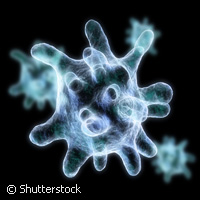Scientists develop fast method to pinpoint genes behind TB virulence
Scientists from Europe and Asia have identified 10 virulence genes of the tubercle bacillus, which causes tuberculosis or TB. This discovery offers the medical world an opportunity to develop new treatments and test novel vaccine candidates against one of the world's most common yet deadliest diseases. The findings of the study, funded in part by the EU, are presented in the PLoS (Public Library of Science) Pathogens journal. Despite the complex task at hand, the scientists successfully obtained their results in just two weeks thanks to a new screening technique they developed. This method could be transposed to other intracellular pathogens without any problem, according to them. While physicians do their best to quash this disease, tuberculosis continues to kill almost 2 million people worldwide each year. TB is caused by bacteria of the mycobacterium family, which includes Mycobacterium tuberculosis, the agent of TB in people. How it propagates within the host cell determines its pathogenicity (virulence). What researchers have known until now is that this pathogenic agent can actually break free from the defence hold of the host. So it infects through parasitism of the macrophages, which play a vital role in the body's immune response by destroying any microbes. M. tuberculosis enters the lungs, is ingested by the alveolar macrophages and positions itself in a phagosome, an intracellular compartment. Phagosomes usually kill off the bodies ingested by the macrophage via acidification, but TB blocks the acidification and proliferates fruitfully. Thanks to the new screening method developed by the scientists, which involves a robot, cellular phenotype samples can be identified both visually and automatically. The upshot is that researchers have more time to identify the microbial bodies involved in the parasitism of cells. The team, led by Dr Olivier Neyrolles from the Institut de Pharmacologie et de Biologie Structurale (CNRS, Centre national de la recherche scientifique/Université de Toulouse) and Dr Priscille Brodin from INSERM (Institut national de la santé et de la recherche médicale) and Institut Pasteur, used the method on a virulent strain of M. tuberculosis and screened over 11,000 mutants of TB rather quickly. The robot was programmed to find out if the 'acidification function' was enabled or not. So the scientists isolated the mutants that failed to block acidification of the phagosome. Genetic engineering helped the team identify the mutations, and they later succeeded in characterising 10 genes involved in the parasitism of the macrophage. The team pointed out that most of the genes code for the synthesis of products secreted by the bacteria: proteins and lipids. They also noted how the isolated mutants could be used when new vaccines are to be developed. Scientists involved in the study were from France, South Korea, Spain and the UK. The findings are an outcome of three EU-funded projects: TB-MACS; TB-VIR; and NEWTBVAC. TB-MACS ('Identification and characterisation of mycobacterium tuberculosis virulence genes involved in macrophage parasitism') received more than EUR 734,000 under the 'Life sciences, genomics and biotechnology for health' Thematic area of the Sixth Framework Programme (FP6) to improve human health by defining bacterial products and processes that are essential to infection. TB-VIR ('Mycobacterium tuberculosis W-Beijing genetic diversity and differential virulence and host immune responses'), backed with almost EUR 3.9 million, and NEWTBVAC ('Discovery and preclinical development of new generation tuberculosis vaccines'), which received EUR 12 million, are supported under the Health Theme of the Seventh Framework Programme (FP7).
Countries
Spain, France, South Korea, United Kingdom



